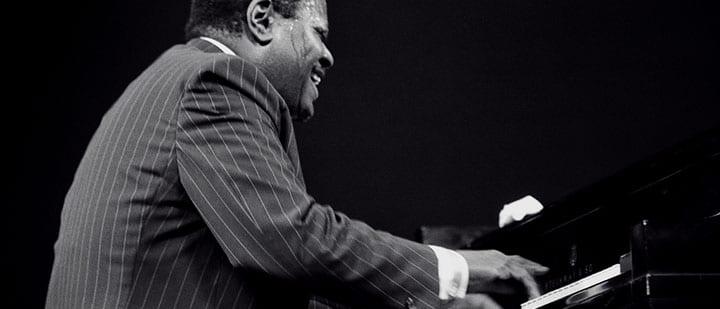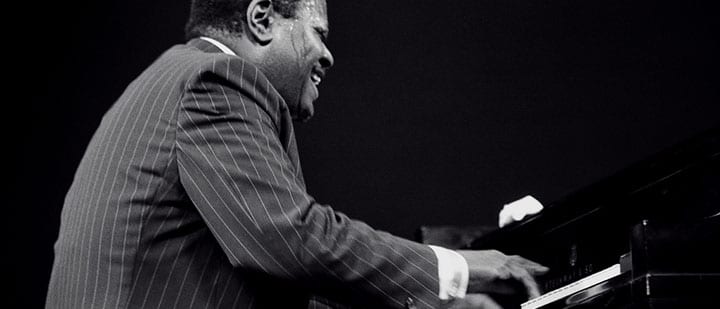Ready to add some flair and style to your piano playing? Then it’s time to explore jazz chord professions on the piano. But before we dive into how to play jazz piano chords, we’ll first discuss what jazz chord progressions are and how they can help broaden your piano-playing horizons.
For starters, a piano chord refers to a combination of notes played at one time. If you’re familiar with guitar chords, it is the same concept on the piano. For instance, you can achieve the A major piano chord by playing A, C#, and E notes all at once. The same goes for D minor, which is the D, F, and A notes simultaneously played.
Now, a piano chord progression refers to a series of chords you play in a particular order based on scales. As for the “jazz” part of jazz chord progressions, that simply relates to the specific chords commonly used in jazz music.
Now that you better understand jazz chords on the piano, let’s learn to play jazz piano chords using these five helpful tips below.
How to Play Jazz Piano Chords & Chord Progressions
1. Familiarize Yourself with Jazz Piano
Before you can learn jazz piano chords, it’s best to familiarize yourself with the sound of jazz piano. As you explore jazz piano music, you’ll soon discover that much of it relies on certain chords (the harmony), improvisation (the melody), and swing rhythm with a backbeat. While the jazz piano differs from the classical piano in many ways, you can begin to get a feel for it by listening to famous sets and practicing some simple jazz piano exercises for beginners. Once you’re better acquainted with jazz piano music, you’re ready to tackle jazz music theory.
1. Know Your Theory
In order to even think about playing jazz piano, your music theory skills have to be strong:
- Practice playing major seventh, dominant seventh, minor seventh, half and fully diminished seventh chords in root position across the keyboard.
- Practice major ii V I chord progressions (ii minor 7th, V dominant 7th, and I major 7th) and minor ii V i chord progressions (ii half diminished, V dominant 7th, and i minor 7th) in all 12 keys.
- Be aware of all the possible chord symbols: Major 7ths (Cmaj7, C△, CM7), Minor 7ths (Cmin7, C-7, Cm7), and half-diminished 7ths (Cmin7♭5, C∅). Luckily, dominant 7ths and fully diminished 7ths only are notated one way (G7 and G° respectively).
2. Know Your Voicings
Another aspect of understanding jazz piano basics involves knowing your voicings. The root position chords above are great to familiarize yourself with the notes but don’t smoothly connect the harmonies. In C:
To play these jazz chord progressions on the piano smoother, move the least distance to the next chord.
Often with smooth voice leading, 7ths in one chord resolve to the 3rd of the next chord. There are many unique sounding jazz voicings to experiment with. Use your ear to be the judge.
To experiment, here are some possible voicings to try out with both major and minor ii-V-I chord progressions.
3. Know Your Extensions
Chordal extensions are harmonies added to 7th chords that add texture, color, and a characteristic jazz sound. In fact, 7th chords are rarely played plainly, but with one or more of these added notes.
As a general rule:
- Major 7ths, minor 7ths, and dominant 7ths often come with added 6ths and/or 9ths. A 9th is just a 2nd an octave up. The 7th is almost always included in any chord, regardless of what extension is being added. When a 6th is added to a dominant chord, it’s always added above the 7th, creating a “13th” interval. Thus, a 13 chord is a dominant 7th with a sixth added above the 7th (see below). Also note that a plain 9 chord indicates a dominant 7th with a 9th added.
- Dominant chords (plain 7th chords that often function as the V in a ii V I chord progression) sound great with many different extensions. In fact, the 5ths and 9ths of dominant chords can be raised or lowered, leading to many unique harmonic possibilities, including 7♭9, 7#9, 7♭5, 7#5, 7♭9#5, 7♭9♭5, 7#9♭5, and 7#9#5.
- Often, in lead sheets and jazz chord progressions, the dominant extensions above aren’t specified, but can be added to taste. This goes for the 6ths and 9ths in major and minor 7th chords. There are almost always extensions added to 7th chords. Many times the 5th is excluded from the voicing, especially if extensions are added. If it sounds appropriate in the chord progression and leads smoothly to the next chord, it’s probably a great choice.
4. Know How to Practice
The easiest way to become familiar with these jazz piano chords is to practice ii-V-I chord progressions in every key. Another great resource is playing pre-written arrangements found in books such as Piano Stylings of the Great Standards (Vol. 1-6) by Edward Shanaphy or The Jazz Piano Book by Mark Levine.
These books provide you with many great voicings that are clearly labeled. And of course, having a quality hard copy full of jazz standards, such as The Real Book by Hal Leonard, is a must for practicing your jazz voicings.
Once you have a strong understanding of jazz chord progressions on the piano, you’ll be all set to tackle all sorts of jazz music. Begin with some easy jazz piano music, and then work your way up to more challenging pieces. You’ll be playing Louis Armstrong and Miles Davis tunes before you know it!
While our tips can help get you on the right track, you can always turn to a certified piano teacher for more guidance. We offer both online and in-person piano lessons that will provide you with the instruction and support you need to take your jazz piano skills to the next level.
 Post Author: Chris F. teaches guitar, piano, music theory, and more in Tulsa, OK. He has experience in concert bands, choirs, chamber music groups, jazz combos, and an award winning jazz big band. Learn more about Chris here!
Post Author: Chris F. teaches guitar, piano, music theory, and more in Tulsa, OK. He has experience in concert bands, choirs, chamber music groups, jazz combos, and an award winning jazz big band. Learn more about Chris here!
Photo by: Tom Marcello
Suzy S.

